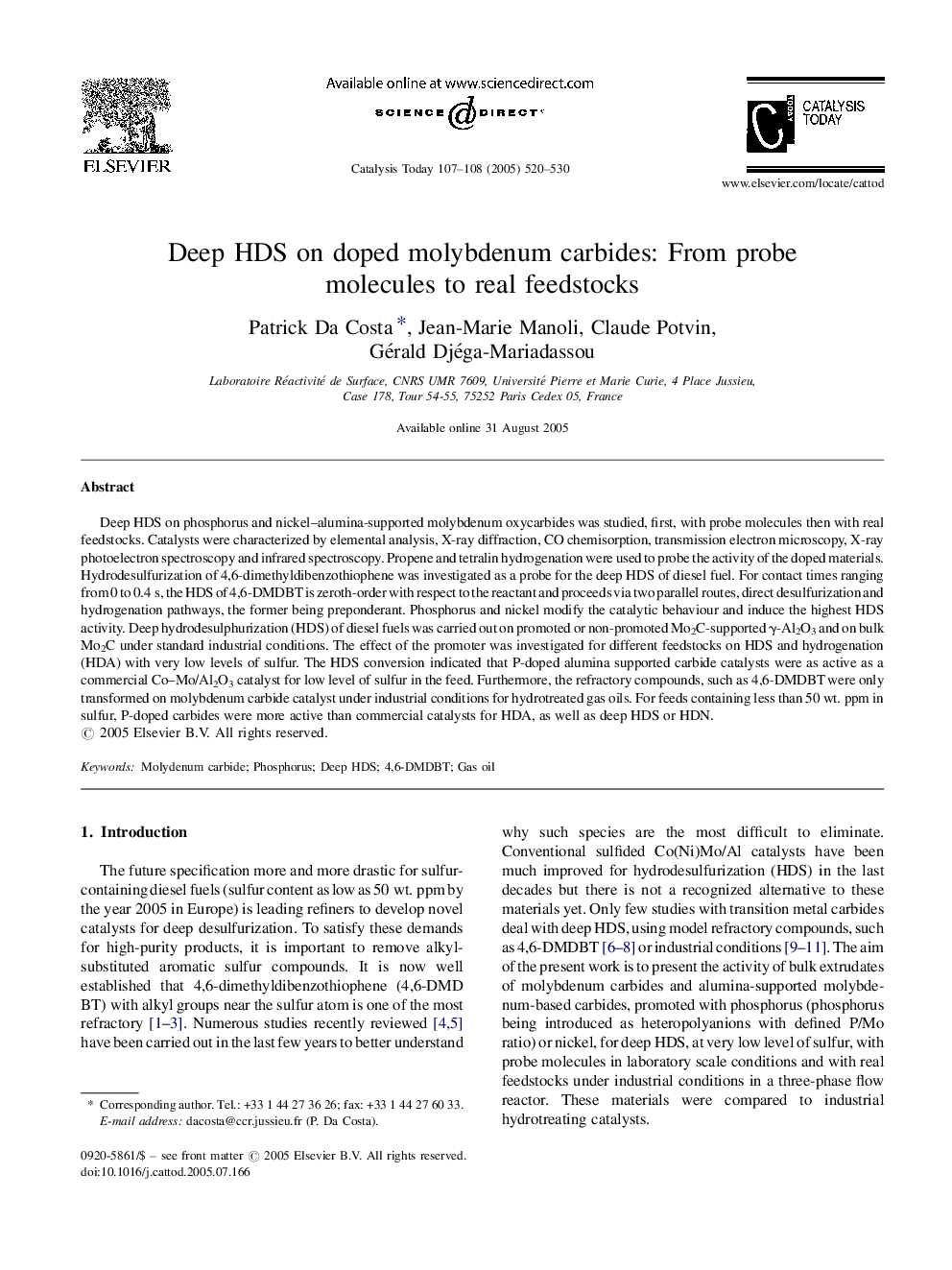| کد مقاله | کد نشریه | سال انتشار | مقاله انگلیسی | نسخه تمام متن |
|---|---|---|---|---|
| 9610229 | 47163 | 2005 | 11 صفحه PDF | دانلود رایگان |
عنوان انگلیسی مقاله ISI
Deep HDS on doped molybdenum carbides: From probe molecules to real feedstocks
دانلود مقاله + سفارش ترجمه
دانلود مقاله ISI انگلیسی
رایگان برای ایرانیان
موضوعات مرتبط
مهندسی و علوم پایه
مهندسی شیمی
کاتالیزور
پیش نمایش صفحه اول مقاله

چکیده انگلیسی
Deep HDS on phosphorus and nickel-alumina-supported molybdenum oxycarbides was studied, first, with probe molecules then with real feedstocks. Catalysts were characterized by elemental analysis, X-ray diffraction, CO chemisorption, transmission electron microscopy, X-ray photoelectron spectroscopy and infrared spectroscopy. Propene and tetralin hydrogenation were used to probe the activity of the doped materials. Hydrodesulfurization of 4,6-dimethyldibenzothiophene was investigated as a probe for the deep HDS of diesel fuel. For contact times ranging from 0 to 0.4 s, the HDS of 4,6-DMDBT is zeroth-order with respect to the reactant and proceeds via two parallel routes, direct desulfurization and hydrogenation pathways, the former being preponderant. Phosphorus and nickel modify the catalytic behaviour and induce the highest HDS activity. Deep hydrodesulphurization (HDS) of diesel fuels was carried out on promoted or non-promoted Mo2C-supported γ-Al2O3 and on bulk Mo2C under standard industrial conditions. The effect of the promoter was investigated for different feedstocks on HDS and hydrogenation (HDA) with very low levels of sulfur. The HDS conversion indicated that P-doped alumina supported carbide catalysts were as active as a commercial Co-Mo/Al2O3 catalyst for low level of sulfur in the feed. Furthermore, the refractory compounds, such as 4,6-DMDBT were only transformed on molybdenum carbide catalyst under industrial conditions for hydrotreated gas oils. For feeds containing less than 50 wt. ppm in sulfur, P-doped carbides were more active than commercial catalysts for HDA, as well as deep HDS or HDN.
ناشر
Database: Elsevier - ScienceDirect (ساینس دایرکت)
Journal: Catalysis Today - Volumes 107â108, 30 October 2005, Pages 520-530
Journal: Catalysis Today - Volumes 107â108, 30 October 2005, Pages 520-530
نویسندگان
Patrick Da Costa, Jean-Marie Manoli, Claude Potvin, Gérald Djéga-Mariadassou,